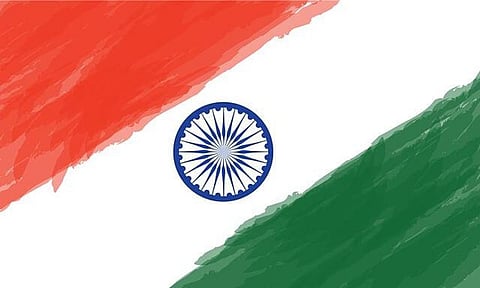The middle color is white, which symbolizes purity, peace, and truth. Hindu scriptures give importance to thought, speech, and bodily action and preach to be pure and honest in all three aspects of an action. In the word Hindu lies the meaning- 'one who rejects untruth' (meaning- who desires the truth). Hindus are peace desiring people. That's why in our worship, we use śhāntih (peace) three times, and we end our prayers with śhāntih. We pray for peace for all beings everywhere, and not just ourselves. The wheel in the middle symbolizes dharma and progress.


